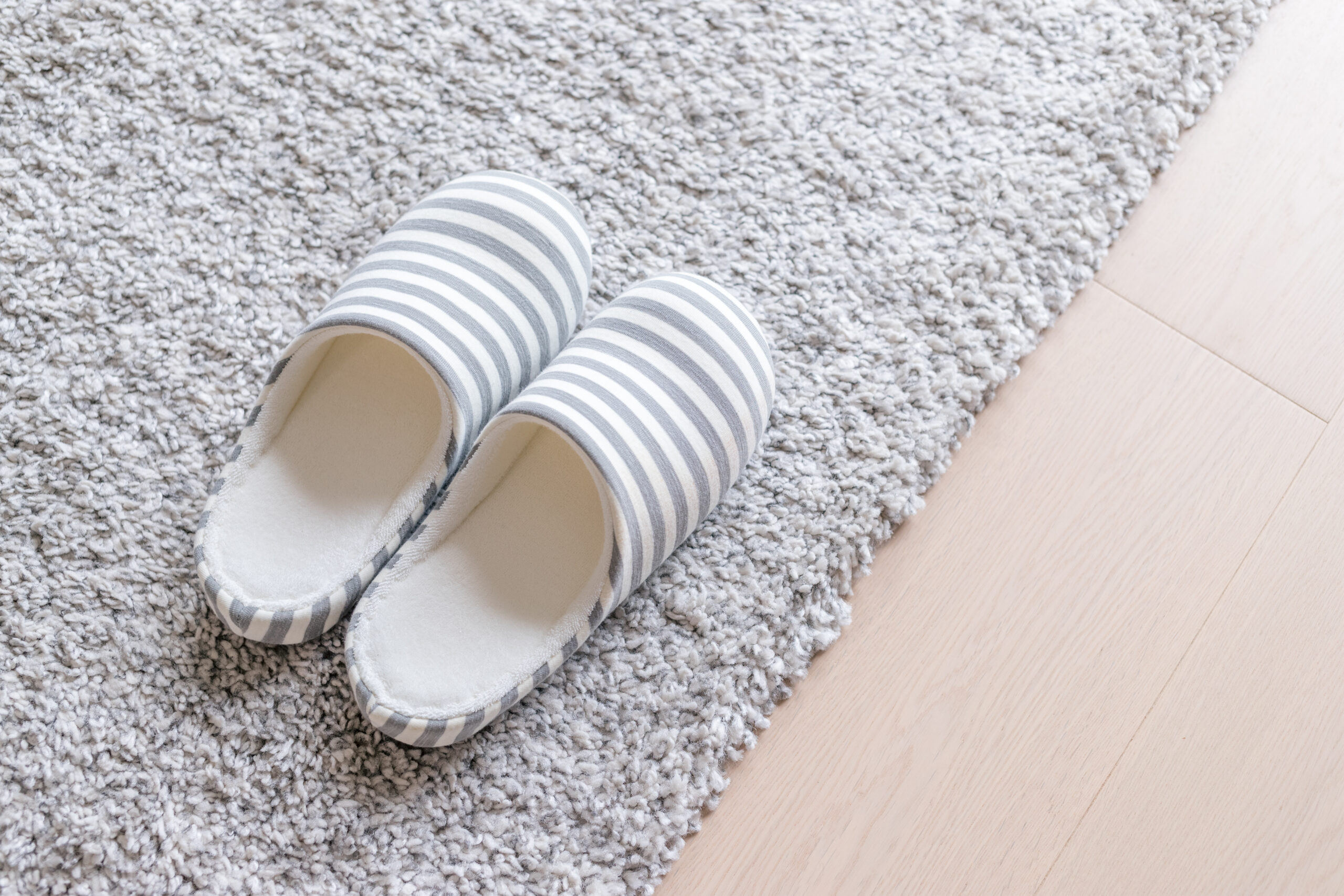During the colder months, many people like to pop their feet into warm slippers before padding around the house or relaxing in front of the TV. Years ago, slippers were mainly confined to the bathroom and bedroom; now they’re worn much more. If you’ve been working from home lately, you’ve probably spent most of your waking hours wearing slippers instead of proper shoes. After all, your colleagues can’t see your feet during Zoom meetings! What’s more, in the season leading up to Christmas, shops and online stores are full of novelty slippers designed to resemble everything from Rudolph the Red-Nosed Reindeer to elf boots decorated with jingling bells.
As the leaves begin to turn, slipper season is undoubtedly upon us. With that in mind, it’s important to make yourself aware of the risks and problems associated with poorly designed slippers. That way, it’ll be easier to ensure you choose a pair that’s capable of looking after your feet.
How Slippers can Affect Your Feet
Slippery Soles:
A major problem with many styles of indoor footwear is that the soles provide little grip compared to those found on outdoor shoes. Wearing slippers with slippery soles increases your risk of losing your balance and injuring yourself, especially when walking across tiled, wooden or vinyl floors. If the soles fall short in terms of grip and you’re worried about falling over, you could try scuffing them with sandpaper. However, the best option is to invest in slippers with anti-slip, deep-tread, flexible rubber soles.
Non-Breathable Fabrics:
Slippers are meant to keep your feet cozy, but they can easily make them too hot if the uppers are made of poor-quality, synthetic fabric as is often the case with cheap, novelty styles. That kind of fabric isn’t breathable: it traps warm air and sweat, creating a breeding ground for fungi and bacteria. If your feet are forced to endure that kind of unhealthy environment, infections such as athlete’s foot could well take hold. Warm, damp slippers also contribute to foot odor. Slippers made of breathable materials, such as suede or wool, will help you to avoid those foot problems.
Cumbersome Design:
Novelty slippers are often large, bulky and cumbersome – if you’re wearing footwear inspired by Santa’s reindeer, for instance, it won’t reflect the actual shape of your feet. This type of footwear can be challenging to walk in and make negotiating stairs hazardous. Slippers that don’t add bulk to your feet are a safer choice, so consider giving novelty styles a miss.
Lack of Arch Support:
A common design flaw with flat, flimsy, soft slippers is that they don’t provide enough support for your arches or plantar fascia, the dense strip of tissue that runs along the bottom of each foot. Such poorly made slippers will do little to help your feet absorb shock when walking, which may lead to lower limb pain. Look instead for slippers with supportive, well-cushioned insoles that your feet can rely on.
Difficult to Keep on Your Feet:
A particularly popular style of indoor shoes, mule slippers, can be particularly problematic from a foot health perspective. As mules are open at the back, they don’t exert a stabilizing influence over your heels or ankles (unlike a good pair of walking boots, say). If your feet move around too much in your slippers, your skin could become damaged and dried out by friction, your gait will be impaired. Slipper-wearers often shuffle rather than walk properly, and injuries may occur.
Another issue with mules is that they aren’t securely fastened to your feet. Your toes may grip your slippers, claw-like, in an attempt to keep them on, as they do with flip-flops. Scientific research published in 2016 found that walking in mule slippers puts toes under twice as much pressure as walking barefoot. This can lead to pain, stiffness, fatigue and toe deformities.
Some retailers sell mule slippers with a strap that goes around the back of the foot. While this makes them more secure than ordinary mules, a safer, more comfortable option is fully enclosed slippers. Buying them from a reputable shoe shop that offers a professional measuring service will ensure they fit properly.
How Our NJ Podiatrists Can Help:
At our Garden State Foot & Ankle Group of Toms River, we can successfully diagnose and treat foot conditions related to poorly designed slippers and other footwear. For example, eradicating athlete’s foot is one of our podiatry services. Our experienced team can also provide expert footwear advice and prescribe orthotics to correct abnormalities and make footwear more comfortable.
Visit Garden State Foot & Ankle Group of Toms River to See if You Suffering With Foot Pain
Dr. Manooj Prasad at Garden State Foot & Ankle Group of Toms River is a highly-experienced podiatrist with an ardent mission to help those suffering from foot, ankle, and lower leg issues. He offers personalized care while considering each patient’s individual lifestyle needs so that the best possible treatment can be administered. Based in both Essex County and Ocean County in New Jersey, service towns include Jackson, Belleville, Roseland, Point Pleasant, Cedar Grove, Livingston, Millburn, Short Hills, Lakewood, Ocean Gate, Lakehurst, Toms River, Montclair, and many more! For more information, you can contact us today at (732)557-9900 (Toms River), (973)450-3035 (Belleville), or explore our website.

0 Comments